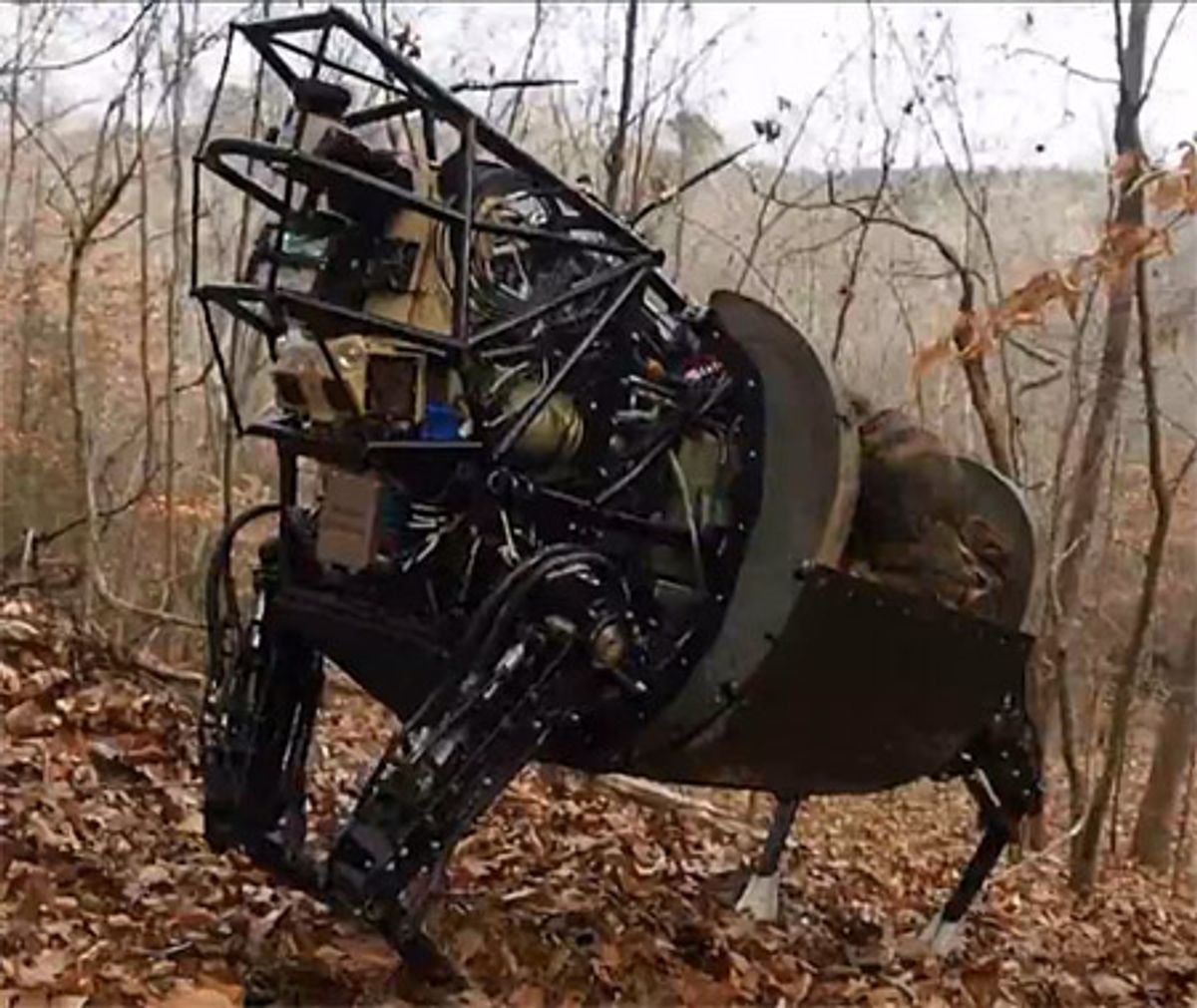We heard back in September that the LS3 quadruped robot had gotten some nifty upgrades and was undergoing field trials with the military, and we've just gotten an update about how that's all been going. Short answer: quite well, but for a longer answer, we talked to DARPA. After the jump, we've got lots of good info for you as well as some some brand new video from the testing program, which includes LS3 doing an accidental barrel roll down a hill into a mud puddle.
LS3 is all about solving the equipment load problem: it's not uncommon for soldiers or Marines in Afghanistan to be carrying 100 pounds or more (45 kg) of gear, often over rough terrain, which is hard work and can lead to injury. LS3's primary purpose is to act as a mule, carrying backpacks and other equipment (up to 400 pounds, or 180 kg) for up to 20 miles over 24 hours. Furthermore, it has to do all of this autonomously, without requiring human intervention (if necessary), so that it doesn't just become another hassle that soldiers have to constantly manage.
To that end, LS3, also known as AlphaDog, has been trained to play follow the leader, either in the leader's exact footsteps (well, nearly) or with its own chosen path. LS3 is now able to understand and obey about ten different kinds of voice commands that can be combined in different ways, like "follow," "stop," "sit," "stay," and "roll over." Except not that last one.
A few other new things:
- LS3 now does night ops, navigating between GPS waypoints autonomously with "zero percent illumination."
- In addition to human following and GPS navigation, you can give LS3 a distance and a direction to go in, and it'll obey.
- LS3 can detect vegetation, and can plow through five foot high bushes without also plowing headfirst into rocks.
- The robot now has a noise level of about 70 decibels, which puts it at the passenger car / vacuum cleaner level.
Oh, and it'll also charge iPods and stuff. So that's cool too.
We got a chance to ask LTC Joseph K. Hitt, LS3 program manager for DARPA, how the program has changed so far based on experience and user feedback, and here's what he said:
"The objective of the program is to add value [to a squad]. It's not to do the best perception, it's not to do the best mobility, it's to add value. As soon as you look at the program with that as your key performance parameter, things like like voice commands, perhaps head and arm signals... Or perhaps, through experimentation, adding a leash to this thing, may be more important, because that's what the marines and the soldiers are telling us adds value."
A leash, you say? Interesting, very interesting.
The overall idea here, remember, is to be able to hand LS3 to a Marine company with a "here you go, enjoy!" And that's it. The robot will be undergoing these fields trials every three months for the next two years in all sorts of terrain, and if we're lucky, we'll be seeing lots more videos of LS3 rolling over and doing other fancy tricks on command.
[ DARPA LS3 ]
Evan Ackerman is a senior editor at IEEE Spectrum. Since 2007, he has written over 6,000 articles on robotics and technology. He has a degree in Martian geology and is excellent at playing bagpipes.




